- Home
- Iris Murdoch
The Philosopher's Pupil Page 3
The Philosopher's Pupil Read online
Page 3
Let me try to describe the spa buildings as they are now. The main edifice is Victorian, a long tall lamentable block of glazed yellow brick with a lot of ‘Gothic’ ornament upon it. At the time of the erection of this pile the establishment was christened ‘the Bath Institute’ and is still referred to as ‘the Institute’, though many people more familiarly call it ‘the Baths’. The Institute building contains, as I shall explain, together with the ‘machine room’ of the spa, a refreshment area, changing-rooms, offices, and two indoor pools. Next to the Institute, and divided from it by a garden about which I shall also speak shortly, is the Ennistone Hall (1760), beautifully proportioned and built of the local stone, a powdery golden-yellow, full of fossils and unfortunately rather soft. Ladies representing the virtues, reduced to four for convenience, who adorn the corners of the roof, have weathered to shapeless pillars. A pediment at one end contains a reclining god, said to represent the river Enn, who has been similarly reduced. Beyond the Hall is the park, or Botanic Garden, containing many rare and interesting plants and trees. There is a lake, and a Victorian ‘temple’ which houses our small but well-arranged Museum with its treasured collection of Roman antiquities. In the same building there is a modest art gallery containing nineteenth-century romantic paintings and some prettyish work by Ned Larkin, an Ennistonian follower of Paul Nash. The open space which separates the Hall from the Institute, and forms part of the premises of the latter, is known as Diana’s Garden. This garden contains an excavated area showing foundations of Roman walls and some water pipes. (A mosaic found here is in the Museum.) Also to be seen is the only ‘natural’ manifestation of the great spring which is visible to the public, a steamy stone basin (perhaps the site of the exploit mentioned in sonnet 153) where scalding water spits up at intervals to a height of three or four feet. The basin is not ornate, it is even rudimentary and of uncertain age, suggestive of the country shrine of some little local god. It is traditionally called ‘Lud’s Rill’ but is more popularly known as the ‘Little Teaser’.
At the other end of the Institute and joining it at right angles is a long concrete structure, now a little strained and battered, built in the nineteen-twenties in the Bauhaus style and at that time considered a model of modern architecture. Between the end of this building (called the ‘Ennistone Rooms’) and the end of the garden runs a wall made of yellow glazed bricks, similar to those of the Institute building, and decorated here and there with mauve and blue tiles made up into pictures of dolphins and such. The large rectangle enclosed by these four sides contains the Outdoor Bath, an expanse of natural warm water (26° to 28° Centigrade at all seasons) over which in winter there hangs a thick pall of steam. The Outdoor Bath is said to be the largest swimming-pool in Europe, but this may be an exaggeration. It certainly meets Olympic standards and is frequented, especially in the colder months, by athletes in training. A large clock with a second hand at one end records the speed of the swimmers. Between the brick wall and the pool at the Diana’s Garden end runs a row of sizeable round concrete wells filled with water at a series of temperatures running from 36° to 45° Centigrade. Into each of these wells, which are tiled at the bottom, a stairway descends, and there is a seat round the edge upon which bathers can sit and soak, with their heads a little above the water level. Each well can in this way contain some ten to fifteen people. These hedonistic places of meditation are known as the ‘stewpots’ or just ‘the stews’.
This completes my account of the outside of the Institute. I now move inside. Through a doorway like that of a Renaissance palace, above which in Roman mosaic style is inscribed the Institute motto, Natando Virtus, one gains access to the first public area, the Promenade. This is a large rather shabby place, painted a melancholy green, dotted with tables and chairs where simple refreshments may be obtained, such as tea, lemonade, bars of chocolate, sandwiches, and of course (free of charge) the famous water. The healing stream flows from the brass mouth of a marble lion, but the filled glasses stand upon the counter. No alcohol is served in the Institute. This rule is maintained in spite of periodic protests by younger citizens. It is held that a bar would radically alter the atmosphere of the place, and no doubt this is true. At the end of the Promenade opposite the main door there is access to the changing-rooms. There is also a long observation window looking on to the Outdoor Bath. (Those who want to watch but not to swim pay a reduced entrance fee.) On the right of the Promenade arc situated the Indoor Bath and its facilities and beyond it the Infants’ Pool and the Institute offices. The Indoor Bath replaces (but unfortunately does not copy) its eighteenth-century predecessor. The latter, built of local stone, felicitously (as we see in pictures) imitated the classical through a natural affinity. Our Bath is built of marble, and its architect, who also thought he was imitating the classical, has produced something resembling an indifferent Victorian picture of a bath in a harem. (Some such idea seems to have haunted a local painter commissioned to paint some frescoes of classical scenes, but whose designs were turned down by the Committee.) However, the place, with its double row of columns and marble steps descending into warm clear water has a certain charm, though spoilt by unsightly masses of potted plants. The Indoor Bath used to be hired out for private parties, but after a gathering which was reported in the national newspapers this custom was discontinued.
On the left of the Promenade a door leads to a large and curious octagonal room known as ‘the Baptistry’. This room enshrines the entrance, complete with pseudo-classical pillars and pediment, to the great ‘machinery’ or ‘engine room’ to use the traditional terms, of the installation. These machines, now modernized of course, were the pride of a well-known nineteenth-century engineer, and the huge subterranean area which they occupy used to be on show to the public. Now, however, for a variety of reasons (thought by some who canvass the matter regularly in the Gazette to be sinister) this area is closed off and the way into the Baptistry is marked PRIVATE. The Baptistry is used as a store-room, and the great hot bronze doors, studded with pseudo-nails, which guard the access to (as we say and imagine) the hot spring itself, are locked against all except ‘authorized personnel’. Even to glimpse these doors, through which steam eternally seeps, is a rare treat for citizens managing to peer in from the Promenade. A door on the far side of the Baptistry leads to the Ennistone Rooms, but the public entrance to the Rooms is of course on the street, and not through the Institute.
I turn now to the Ennistone Rooms, the modern (well, not so modern) extension of the Institute. The Rooms, as I explained, are a nineteen-twenties building meeting the Institute at right angles. The ‘nose’ or narrow end of the building, with an austere but handsome public entrance, is on the same street as the Institute, the walls being coterminous. The Rooms stretch back skirting the Outdoor Bath, from which they are separated by a garden and a high beech hedge. (The windows on the Bath side are double-glazed.) Of course a therapeutic use of the waters dates back a long way, perhaps as far as any human occupation of the site. Certainly a ‘cure’ existed at Ennistone in the seventeenth and eighteenth centuries, and the eighteenth-century buildings included a wing devoted to private baths and treatment. In the nineteenth century these facilities were housed inside the Institute Building, but were considerably curtailed after the construction of the Indoor Bath. After the first war, when ‘health crazes’ were much in the news, the Town Council decided to invest in a new building and make a greater profit out of science.
The Rooms comprise consulting rooms, offices, massage parlours, mud baths, a gymnasium, a common room, but mainly the enterprise takes its name from the set of luxurious bedrooms with private baths attached. These large bed-sitting rooms, modelled on similar installations in continental spas, were designed for wealthy invalids. They were adorned in an art déco style which contrived to be, at the same time, severe, exotic and insipid. The colour schemes were predominantly black and white, trimmed with beige, orange and light green. There were a lot of triangular mirrors with zigzag edges
, and curly tubular steel chairs which swayed alarmingly when sat on. The beds were also made of tubular steel, moving on casters to stand against carved light oak headboards attached to the wall.
Beyond the louvred double doors the bathrooms were walled with iridescent coloured glass depicting thin ecstatic ladies on hilltops, leaping fawns, enormous cocktails, aeroplanes, airships and so on, together with pieces of furniture made of fur, and various alcoves protected by moorish lattices. The baths themselves (black), sunk into the floor and shaped like boats with blunt ends, were large and deep enough for a swimmer to take two or three strokes. Only the big goldeny Edwardian brass taps were reminiscent of a more traditional taste. These were put in by mistake, much to the annoyance of the Swedish architect, but never changed, since by then the cost of the building had exceeded the wildest estimates. (Most of the fittings came from Sweden; there were rows about that too.) I have used the past tense in this description since the Rooms have changed a good deal since the days of their glory. The famous orange and white ‘sunrise’ crockery has been mostly broken and not replaced, as have the zigzag mirrors and iridescent glass. The tubular snakes have sagged under their burdens and been succeeded by sturdy ugly chairs. The glittering black Swedish tiles are gone from the baths and decent white British tiles reign in their stead, though the shape of the baths and the Edwardian taps remain. The Institute suffered considerably from blast during the war, when it was used as an Air Raid Precautions centre. (The Outdoor Bath remained in use throughout the conflict and was very popular with the Army Camp upon the Common.) In general the decor of the Rooms has suffered, in a way which ought to have been better foreseen by the architect, from perpetual steam, since the hot water streams continuously from the great brass taps, maintaining a lowish water level in the baths (which may be raised by putting in the plug). The temperature is kept at 42° Centigrade. (Once the water supply suddenly became scalding hot by mistake and drowned an elderly gentleman who was unable to get out in time, but we do not speak of that.) The deafening noise of the water, together with the thick steamy moist air, gives the Ennistone Rooms a strange atmosphere. More than one woman has admitted to me that she feels a sexual thrill on entering.
The Institute occupies a central place in the social life of Ennistone. Its role has been compared to that of the agora in Athens. It is the main rendezvous of the citizenry where people idle, gossip, relax, show off, hunt for partners, make assignations, make business deals, make plots. Marriages are made, and broken, beside these steamy pools. It is like what going to church used to be, only it happens every day. This aspect of our lives is of course described by responsible citizens in high-minded terms. Swimming is the very best kind of exercise for old and young, and is undoubtedly also good for the soul. This lofty conception of the spiritual utility of swimming battles continuously with the (also recurrent) notion of many citizens that the Baths is a temple of hedonism. The old this dansants (with three-piece orchestra) upon the Promenade have long ceased to be. But the danger always remains that innocent and healthy disciplines may degenerate into pure pleasure.
Be that as it may, the people of our town make the fullest possible use of this natural bounty. Everybody swims. Babies learn at the age of six weeks in the Infants’ Pool, where mothers with amazed joy watch the tiny creatures taking boldly to the water, striking out with puny arms, and floating fearlessly with noses just above the surface. The aged swim, unashamed of their bodies, pot-bellied men and ancient wrinkled women in bikinis. Decency is maintained, however. Recent suggestions about nude bathing (a sign of the times) have been quickly extinguished. We swim every day seven days a week. Many of us swim before going to work, or, if the lunch-hour allows, at midday, a popular time. Then there are evening swimmers, many of whom have also been morning swimmers. Persons of leisure or housewives, mothers with children, come at less crowded hours and sit about and talk. We swim all the year round. The Outdoor Bath, floodlit after dusk, has a quite special charm in winter when we run from the changing-rooms, crossing a patch of frost or snow, to plunge into the warm water which is covered by so thick a cloud of steam that visibility may be reduced to a few feet and we swim about in strange insulated bubbles. Most swimmers favour the Outdoor Bath as being suited to the serious swimming which is a matter of pride in our town. The Indoor Bath is usually frequented by certain kinds of women, I do not mean prostitutes, but shy or withdrawn people who shun the more boisterous atmosphere outside; and the place has lately developed, especially at weekends, a curious clientele of its own.
I must say something more about the Ennistone Rooms. Unfortunately for the town, the cult of the Rooms by rich invalids from elsewhere did not last for long, and Ennistone’s hopes of becoming an internationally famous spa were soon dashed. A medical report published in The Lancet, and reprinted in the national press, to the effect that the Ennistone water, though less, had no curative properties whatever, was probably unconnected with the change of fashion which returned Ennistone Spa to comparative obscurity. (It is also doubtless untrue that the then Director of the Institute tried to have the report hushed up.) Various postmortems bemoaned various mistakes, such as not enough advertising, or the wrong kind, bad food, unattractive masseuses, and so on. One trouble with the project was that its original creators never made up their minds whether they were designing a hospital or a hotel, and it was later argued that the Rooms performed neither function. This would perhaps not have mattered had the waters been more widely credited with magical properties. In any case, and for whatever reason, the troop of highly paid doctors and nurses and physiotherapists who had run the Rooms in its early days departed, leaving the town with a much-diminished asset with which, of course, something had to be done. What was done was to let out the Rooms at a more modest cost for short periods, even by the day, to locals and tourists simply as hotel rooms where those who enjoyed such things could soak and sleep, and soak and sleep again. No further ‘treatment’ was offered but twice a week a doctor was in attendance to discuss medical problems for a fee. (Even about this there were arguments, everything about the Institute provokes arguments.) Sufferers from arthritis, undeterred by the medical report (or more likely not having heard of it), came in small but regular numbers. Some were encouraged to come by local Ennistonian practitioners. No restaurant facilities were offered, but food could be ordered from the snack bar on the Promenade. Some pilgrims continued to travel to the great Ennistonian spring, but the main custom of the Rooms increasingly came, rather to the surprise and dismay of the Committee, from ordinary Ennistonians who thought it fun or even chic to hire a room for a day or two and enjoy the handsome private bath and the luxury of relaxing in a place which still bore some resemblance to an exotic hotel. The cost was not great. Students came with their books. Writers came. Slimmers came. Convalescents came. Some doctors (including Ivor Sefton) recommended this ‘cure’ to people recovering from nervous breakdowns. I should add that married couples (and a fortiori any other kind) are not allowed to reside together. The Rooms are all single rooms and are kept under such supervision as to preclude any improper occurrences. Alcohol is also banned, though the ban is difficult to enforce. The popularity of the Rooms has (perhaps this is to be expected) occasioned criticism from the anti-hedonist lobby, who claim that excessive enjoyment of the waters must be demoralizing and that hot baths and beds give people ideas. It is even alleged that people make a habit of leaving their offices early at four-thirty, bathing and resting until six and then proceeding to the pub. I have met some of these offenders myself.
I have portrayed our citizens as rather sober and strait-laced folk, and this is indeed true of the majority. However, there is also manifest, and not only in the young people, a certain restless sensationalism, something almost superstitious, which seems bound to erupt at periodic intervals. A visiting evangelist made a deep impression some years ago by crying out ‘You have dethroned Christ and worship water instead.’ Some serious persons went about shaking their heads and sp
eaking of ‘grave spiritual hazards’. This sort of unhealthy excitement or ‘moral unrest’, something vague, almost fanciful, came at fairly rare intervals, yet regularly enough for people to attempt to chart them. Perhaps there was nothing to these ‘phases’ except a periodic infectious need for people to say ‘We’re going into one of those things’, or ‘We’re going to have one of our funny times.’ It might be as if, morality being tiring, a holiday from it had at certain intervals to be decreed, at least ostensibly, by some covert social complicity. These ‘holidays’ took various forms, sometimes appearing simply (or initially) in the guise of some prevalent ‘craze’, which was then taken rightly or wrongly as a symptom of deep psychological or moral disorder. Some years before there had been a sudden passion for interpreting dreams, then for experiments in telepathy, seances, automatic writing, then perfectly rational people began to see ghosts (and so on). At such periods more was always to be heard of the old speculation about the waters having an aphrodisiac effect. (I recall a harmless little Roman Catholic shop called ‘Our Lady of the Grotto’, which had existed among us for some time, being suddenly made an object of interest, even persecution, by people who went round murmuring ‘What lady, of what grotto?’ It eventually changed its name to ‘The Pentecostal Bazaar’. This example suggests the quality, as well as the irrationality, of these seizures.)

 Jackson's Dilemma
Jackson's Dilemma The Flight From the Enchanter
The Flight From the Enchanter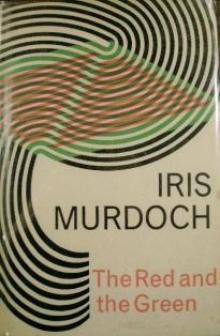 The Red and the Green (Vintage Classics)
The Red and the Green (Vintage Classics)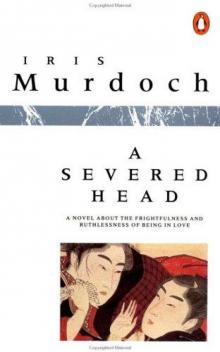 A Severed Head
A Severed Head The Black Prince
The Black Prince The Nice and the Good
The Nice and the Good The Unicorn
The Unicorn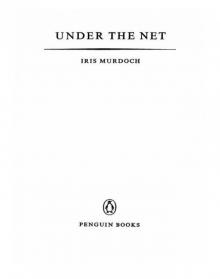 Under the Net
Under the Net The Italian Girl
The Italian Girl A Fairly Honourable Defeat
A Fairly Honourable Defeat An Accidental Man
An Accidental Man A Word Child
A Word Child The Philosopher's Pupil
The Philosopher's Pupil The Book and the Brotherhood
The Book and the Brotherhood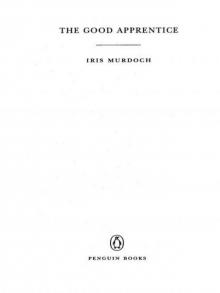 The Good Apprentice
The Good Apprentice The Sacred and Profane Love Machine
The Sacred and Profane Love Machine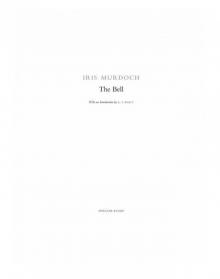 The Bell
The Bell Henry and Cato
Henry and Cato Metaphysics as a Guide to Morals
Metaphysics as a Guide to Morals The Time of the Angels
The Time of the Angels Nuns and Soldiers
Nuns and Soldiers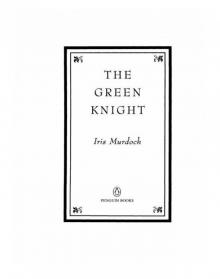 The Green Knight
The Green Knight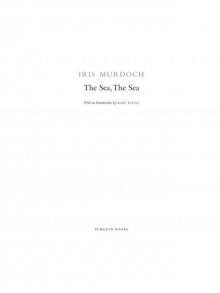 The Sea, the Sea
The Sea, the Sea Sartre: Romantic Rationalist
Sartre: Romantic Rationalist Bruno's Dream
Bruno's Dream An Unofficial rose
An Unofficial rose Sartre
Sartre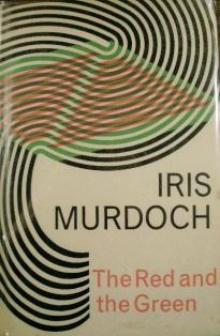 The Red and The Green
The Red and The Green